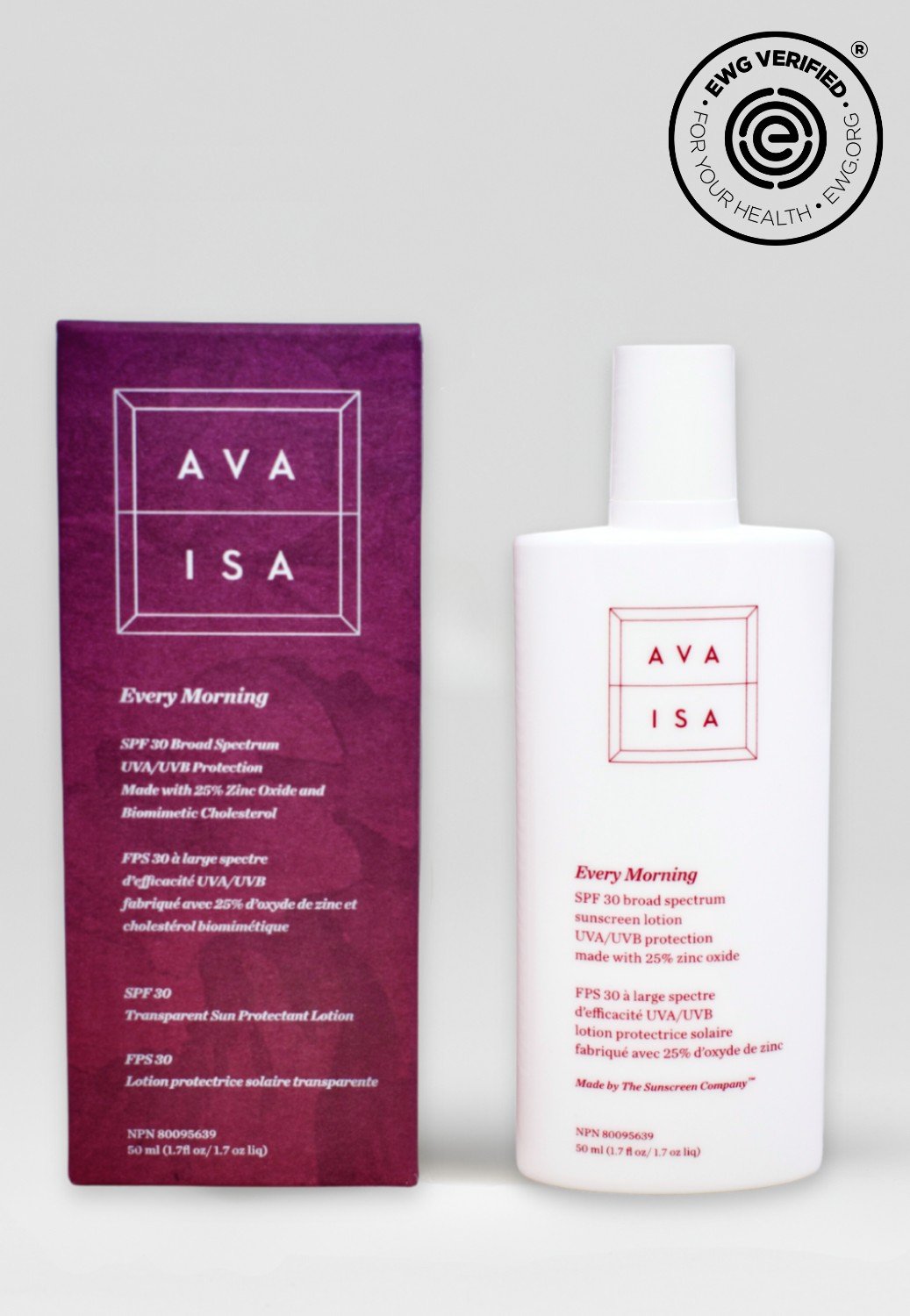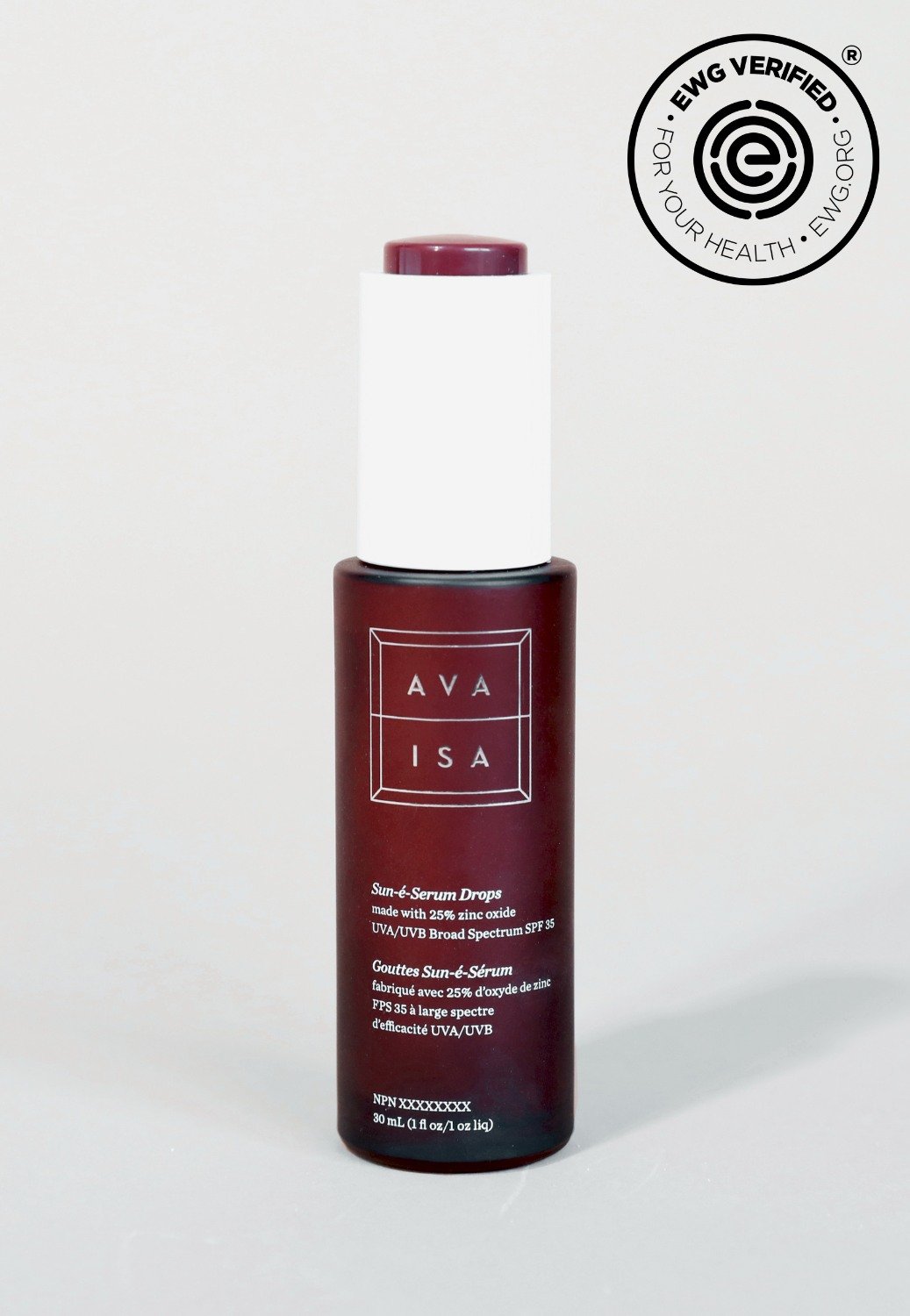Butyloctyl salicylate in mineral sunscreens. Safety concerns and why we do not use chemical SPF boosters.
Butyoctyl salicylate in mineral sunscreens. Is it safe?
We’ve made our position about sunscreens very clear in our 15 years in business. We look to maximize their UVA protection since we think this is the key to best protecting your skin against skin cancer, pigmentation and the signs of aging. We do not use UV filters that permeate or absorb into the body or have the potential to be endocrine disrupting for your hormonal health. We chose what UV filters for our sunscreen formulas and what concentration we should use them in based off these two principles. It’s our way of formulating in order to prioritize safety and efficacy. Butyloctyl silicate and its cousin tridecyl salicylate do not meet these criteria and we do not use them in any of our sunscreen formulas. Let’s explain why.
No Anti-Inflammatories in Sunscreens:
This may surprise you but we actually do not use any ingredient that is a known anti-inflammatory with anti-redness functionality in any of our sunscreens. This means you will not find bisabolol, niacinamide, aloe vera, allantoin or butyloctyl salicylate or tridecyl salicylate in our sunscreens. We also most definitely do not use less of our active ingredient Zinc Oxide and replace it with anyone of these ingredients. We think this can have a huge impact on the sunscreens efficacy, specifically its UVA protection. We’ve actually written an entire blog post that goes into detail about how we distinguish good skincare actives to use in sunscreens (like anti-oxidants) versus ‘bad’ skincare actives for sunscreens (like anti-inflammatories). A worthwhile read - and a unique perspective and practice that most in the sunscreen industry do not share but we feel is a best practice that hopefully will be come commonplace or a standard.
The short summary for why we do not use anti-inflammatories in our sunscreens- both SPF testing and the UVA test that gives the PA rating system are in-vivo (tested on humans) and base their results on either skin redness or skin pigmentation to give an SPF or PA rating on the label. Anti-inflammatories like bisabolol, niacinamide, aloe vera, allantoin or butyloctyl salicylate or tridecyl salicylate reduce redness and possible pigmentation and therefore muddy the waters for the results for these tests. They make it challenging to know whether the sunscreen reduces the amount of harmful UV light damaging the skin or is it simply reducing skin redness or pigmentation. Ingredients like bisabolol and butyloctyl salicylate are marketed to sunscreen brands and formulators as SPF and PA boosters. Have you ever seen a sunscreen formula with a relatively low UV filter concentration, a surprisingly high SPF or PA rating system, and any of these ingredients in the inactive ingredient list? It’s a common occurrence and we would argue not a coincidence.
The Butyloctyl Salicylate Difference: A ‘Chemical’ sunscreen filter that does actual UV attenuation
Octyl salicylate (also known as octisalate or ethylhexyl salicylate) is a ‘chemical’ UV filter and regulated by the FDA and Health Canada. We try to avoid the use of ‘chemical’ and ‘physical’ as descriptors for UV filters since they are misnomers and do not effectively distinguish between the safety, efficacy and performance of UV filters. However to make it easier for readers who often see these terms used, we will describe octisalate as a ‘chemical’ organic filter that absorbs mainly in the UVB portion of light and thus is used to increase the SPF of a sunscreen.
Butlyoctyl salicylate and tridecyl salicylate are modified versions of octyl salicylate/octisalate. They are modified enough that the FDA and Health Canada do not recognize them as being active ingredients or UV filters. They are therefore marketed to sunscreen brands and formulators as inactive ingredients that can help disperse mineral UV filters, stabilize Avobenzone or act as an anti-inflammatory like other aspirin derived ingredients. You will therefore always find these ingredients listed in the inactive section on a sunscreen label. However, are they also incognito UV filters, i.e. absorbing UV light, just like octyl salicylate?
In our years of research and talking about the drawbacks of butyloctyl salicylate, we were never able to conclusively answer the above question. We could never find a UV attenuation curve that would show whether these ingredients were actually absorbing any UV light like their modified counterpart octyl salicylate. The blogger and influencer Lab Muffin shared that she was able to find this exact UV curve showing that they do absorb UV light and are therefore true UV filters. We do not often agree with Lab Muffin on many things but in this one instance it seems like we do- butyloctyl salicylate and tridecyl salicylate are really ‘chemical’ UV filters hiding in the inactives.
“We do not use butyloctyl salicylate in our all-mineral sunscreens because: it would not be a true all-mineral sunscreen, it absorbs into the body and has potential safety issues for kids and pregnant women, it makes it hard to tell what the real SPF’s is and it could indirectly result in a sunscreen with lowered UVA protection. It’s use doesn’t meet any of our standards and yet its use is commonplace in our industry.”
Why we don’t use butyloctyl salicylate in our mineral sunscreens: not true all-mineral sunscreens, potential for absorption into the body, fake SPF’s, negative impact on UVA
To be clear, both mineral and non-mineral sunscreens use butyloctyl salicylate and tridecyl salicylate in their inactive ingredients to increase the SPF and stabilize or disperse other UV filters. Their use is not a mineral sunscreen issue. The fact remains though- you can’t use butyloctyl salicylate and tridecyl salicylate in your sunscreen and call them ‘all-mineral’. That’s a misleading claim for consumers and you could argue that means the product is misbranded.
We do not use butyloctyl salicylate because it’s a small molecule of less than 1 nm in size and with a molecular weight of than 300 Daltons. Its small size means that it definitely absorbs through skin and into the body in the same way as octyl salicylate. As mentioned, we do not use any UV filters that can permeate into the body as this makes the question of endocrine disruption null and void. We also do not need to use it. We would rather have a ‘true’ SPF 30 than an artificially elevated or ‘fake’ SPF 50. We believe in transparency and using our UV filters like zinc oxide in high enough concentrations that we give great broad spectrum protection and not just playing label claims and confusing consumers. We also value maximizing the UVA protection of our sunscreens and this means we do not use SPF boosters to replace UV Filters like zinc oxide. Using less zinc oxide can reduce your UVA protection and leave your skin exposed to damaging effects like pigmentation, wrinkles and laxity and skin cancer. Unfortunately, most consumers will not know the extent of this damage until years later when they start to see the signs show up on their skin when they thought they were protecting it adequately.
As a thank you for reading our blog, we would like to offer you a 10% off discount on any of our mineral sunscreens in our online store. Click the link below and use promo code SUNBLOG10 at checkout for our exclusive blog discount.
Update on July 12th: An article in Bloomberg titled, “Mineral Sunscreens Have Potential Hidden Dangers, Too” was published, of which our co-founder and OB/GYN Dr. Denis Dudley was happy to provide background information on salicylate toxicity in pregnancy including for both octisalate and butyloctyl salicylate. In addition to many of the points that we have made about butyloctyl salicylate being a ‘chemical’ filter that means it cannot be in a sunscreen labelled as ‘all-mineral’- it made several arguments about the safety of it being used in products for children and for pregnant women. It quoted several experts including the Vice Chair of the EWG about the safety of butyloctyl salicylate in young children due to its similarity to salicylic acid and it being in the Apspirin family. It also mentioned the concern re: pregnant women using a potential high dose (as high as 10%) in a leave on product in large quantities over their entire bodies. This is in keeping with a 2006 assessment by the Austraiian governments Therapeutics Goods Administration, the Aussie equivalent of the FDA, butyloctyl salicylate should not be used by children below 4 years or by pregnant women.v At The Sunscreen Company, we love to offer the best in continuing skincare and sunscreen education, so make sure to follow us on IG @thesunscreencompany.

